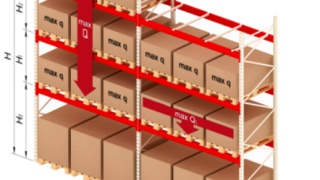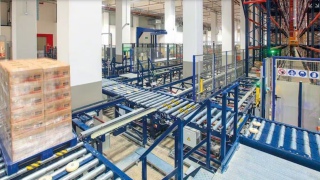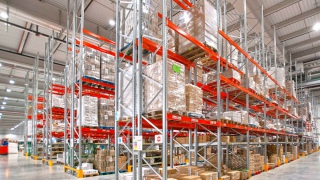Types of Cold Storage Warehouses: Standards, Use Cases, and Equipment You Need
In today’s temperature-sensitive supply chain, cold storage warehouses are vital for preserving product integrity. From fresh produce to pharmaceuticals, maintaining precise environmental conditions is a non-negotiable part of modern logistics. In this article, we’ll explore the main types of cold storage warehouses, technical requirements, use cases, and the specialized equipment that makes it all work.
Types of Cold Storage Warehouses
Cold storage facilities can be classified based on temperature range and operational design:
1. Chill (Cool) Storage
-
Temperature range: +2°C to +8°C
-
Purpose: For short-term storage of dairy, fresh vegetables, meat, or beverages.
-
Design: Often used by grocery chains, food processors, and restaurants.
2. Refrigerated Storage
-
Temperature range: 0°C to +4°C
-
Purpose: For medium-term preservation of perishable goods with extended shelf life.
-
Common users: Supermarkets, meal kit distributors, cosmetics producers.
3. Freezer Storage
-
Temperature range: -18°C to -25°C
-
Purpose: Long-term storage of frozen foods like seafood, ice cream, frozen meals.
-
Note: Requires high insulation and defrosting systems to prevent ice buildup.
4. Ultra-Low (Deep) Freezers
-
Temperature range: -40°C to -80°C
-
Used for: Vaccines, biotech materials, and specialized chemicals.
-
Operators: Pharma, medical labs, scientific research facilities.
5. Blast Freezers or Quick-Freeze Chambers
-
Temperature range: -35°C to -45°C
-
Function: Rapid freezing to lock in food quality immediately after processing.
-
Relevance: Poultry, seafood, pastry, and prepared meal industries.
Equipment Used in Cold Storage Warehouses
To maintain strict temperature control and safety, specialized equipment is essential. Here are the critical components:
1. Refrigeration Units
-
Centralized systems (ammonia or Freon-based)
-
Modular cold rooms with independent units
-
Redundant backup generators for power outages
2. Insulated Panels and Doors
-
Polyurethane or PIR-insulated wall and ceiling panels
-
Heavy-duty insulated roller or sliding doors
-
Airlocks or curtain doors to minimize thermal exchange
3. Temperature Monitoring Systems
-
Real-time sensors with cloud-based dashboards
-
Alert systems for deviation control
-
Compliance logs for audits and regulatory agencies
4. Cold-Resistant Racking
-
Galvanized or stainless-steel pallet racks
-
Mobile shelving to optimize limited space
-
Special coating to prevent corrosion from humidity
5. Material Handling Equipment
-
Cold-room-rated forklifts with low-emission engines
-
Pallet jacks with anti-slip wheels
-
Temperature-resistant conveyor belts
6. Floor Heating Systems
-
Prevents condensation and frost heave in freezer floors
-
Essential for long-term structural integrity
Use Cases Across Industries
Food & Beverage
-
Frozen foods, dairy products, fresh produce
-
Compliance with HACCP and ISO 22000
Pharmaceutical & Biotech
-
Storage of vaccines, insulin, blood plasma
-
GDP-compliant with secure access controls
Retail & E-commerce
-
Order fulfillment with chilled and frozen SKUs
-
Just-in-time delivery for freshness
Third-Party Logistics (3PL)
-
Multi-temperature zone warehouses
-
Cross-docking for mixed-temperature loads
Regulatory & Safety Requirements
-
Temperature logbooks: Daily verification and automated reporting
-
Hygiene protocols: Cleaning, pest control, contamination zones
-
Fire safety: Non-combustible insulation and gas suppression systems
-
Employee protection: Heated clothing, time-limit exposure, proper footwear
Conclusion: Cold storage warehouses are much more than cold boxes — they are precision-engineered ecosystems critical to the integrity of entire supply chains. Choosing the right type of facility and equipment depends on your products, compliance requirements, and operational volumes. Whether you’re scaling an e-commerce platform or managing medical logistics, investing in the right cold storage infrastructure pays dividends in efficiency, product safety, and trust.
_0x70_d59.png)



